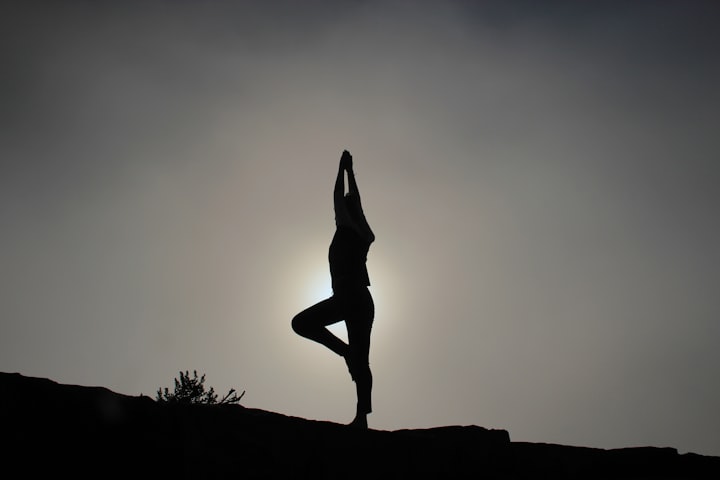3 Yoga tricks to fall asleep
3 Yoga Sleep Techniques

Are you not getting enough sleep? Devote 5-15 minutes every night to practising the Yoga routine provided inside, which includes three tricks to help you fall asleep faster.
Regular Yoga practise not only boosts immunity and keeps diseases at bay, but it is also an excellent way to relieve stress, anxiety, or tension in the mind or body and helps restore balance in order to prepare you for a good night's sleep. Yoga is packed with health benefits, from relieving chronic stress patterns to increasing body awareness and creating mental clarity and calmness, thanks to its meditation and breathing poses that sharpen concentration, brighten one's mood, and relax the body to help you sleep better.
"Yoga encompasses yogic techniques such as asanas or physical postures, breathing techniques known as pranayama, meditation, mudra, chanting, and more," said Yoga Master and Spiritual Guru - Grand Master Akshar in an interview with HT Lifestyle. Set aside 5, 10, or 15 minutes.Every night, set aside 5, 10, or 15 minutes to practise the following routine. Meditation and pranayama techniques can be done for about 2 - 3 minutes before going to bed and gradually increased with practise. Here are three tricks to help you sleep faster."
Each yoga posture can be held for about 30 seconds and repeated three times. Grand Master Akshar recommended three Yoga poses that are easy to learn and suitable for beginners. They can be done by anyone and are best done before going to bed.
1. Balasana, also known as Child's PoseP
Sit on your heels on the floor or a yoga mat, keeping your knees together or wide apart. Exhale slowly and bend forward to touch your forehead to the floor or rest it on a block or two stacked fists, keeping your arms alongside your body and palms facing up.
Alternatively, by reaching your arms out towards the front of the yoga mat, you can keep your palms facing down on the mat. If your knees are together, gently press your chest on the thighs; if your knees are apart, gently press your chest between the thighs.
R elax the shoulders, jaw, and eyes, and find a comfortable position for the forehead because there is an energy point in the centre, between the brows, that promotes a "rest and digest" response by stimulating the vagus nerve. Hold the pose for as long as you like, pulling your navel towards your spine on inhalation and softening your body and arms on exhalation. Slowly return to a sitting position on the heels, inhaling and uncurling the spine.
Benefits: Not only does this beginner's Yoga pose help to reduce stress and anxiety by releasing tension in the chest, back, and shoulders, but it also helps if you experience dizziness or fatigue during the day or during your workout. It is a gentle stretch for the back, hips, thighs, and ankles, which can help relieve back pain.
Precautions: This exercise is not recommended for pregnant women, people who have diarrhoea, or people who have had a knee injury.
2. Sukhasana, also known as the easy pose
Method: Sit with your legs stretched out on a Yoga mat or the floor. Bend one leg and place it under the opposite thigh, then repeat with the other leg.
Sit up straight, keeping your head, neck, and trunk in a straight line, and place your hands on your knees or thighs in Chin Mudra or Jnana Mudra. Turn your palms up to be receptive, or down to feel grounded, and inhale slowly. Exhale slowly and feel your spine lengthen as you root down through your seat.
Benefits: In addition to providing stillness and tranquillity, this asana relieves muscle and joint pains by assisting the practitioner in maintaining good posture, flexibility, keeping the back straight, and leg strength. In turn, this lengthens the back muscles and spine, broadens the collarbones and chest, stretches the outside of the knees, and unlocks the hips.
3. Vajrasana, also known as Thunderbolt Pose/Diamond Pose
Begin by kneeling on the floor and resting your pelvis on your heels. Pull your knees and ankles together and point your feet in line with your legs to keep your heels close to each other.
Place your palms on your knees or thighs and gently rock your pelvis back and forth until you're comfortable. As you sit back on your legs, exhale.
Benefits: Vajrasana not only keeps the mind calm and stable, but it also cures digestive acidity and gas formation, relieves knee pain, strengthens thigh muscles, and relieves back pain. Exercise helps to strengthen sexual organs and aids in the treatment of urinary problems.






Comments
There are no comments for this story
Be the first to respond and start the conversation.